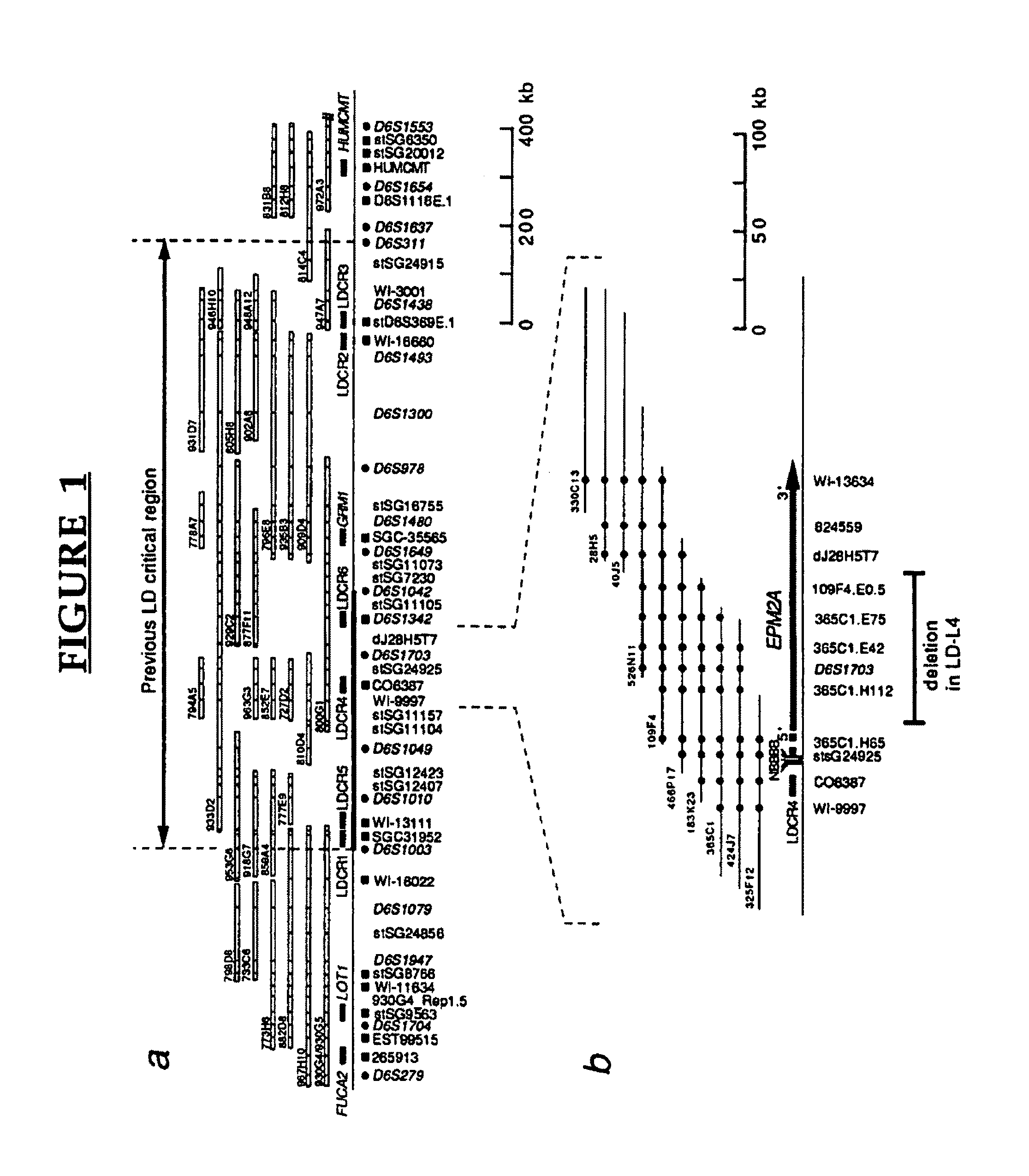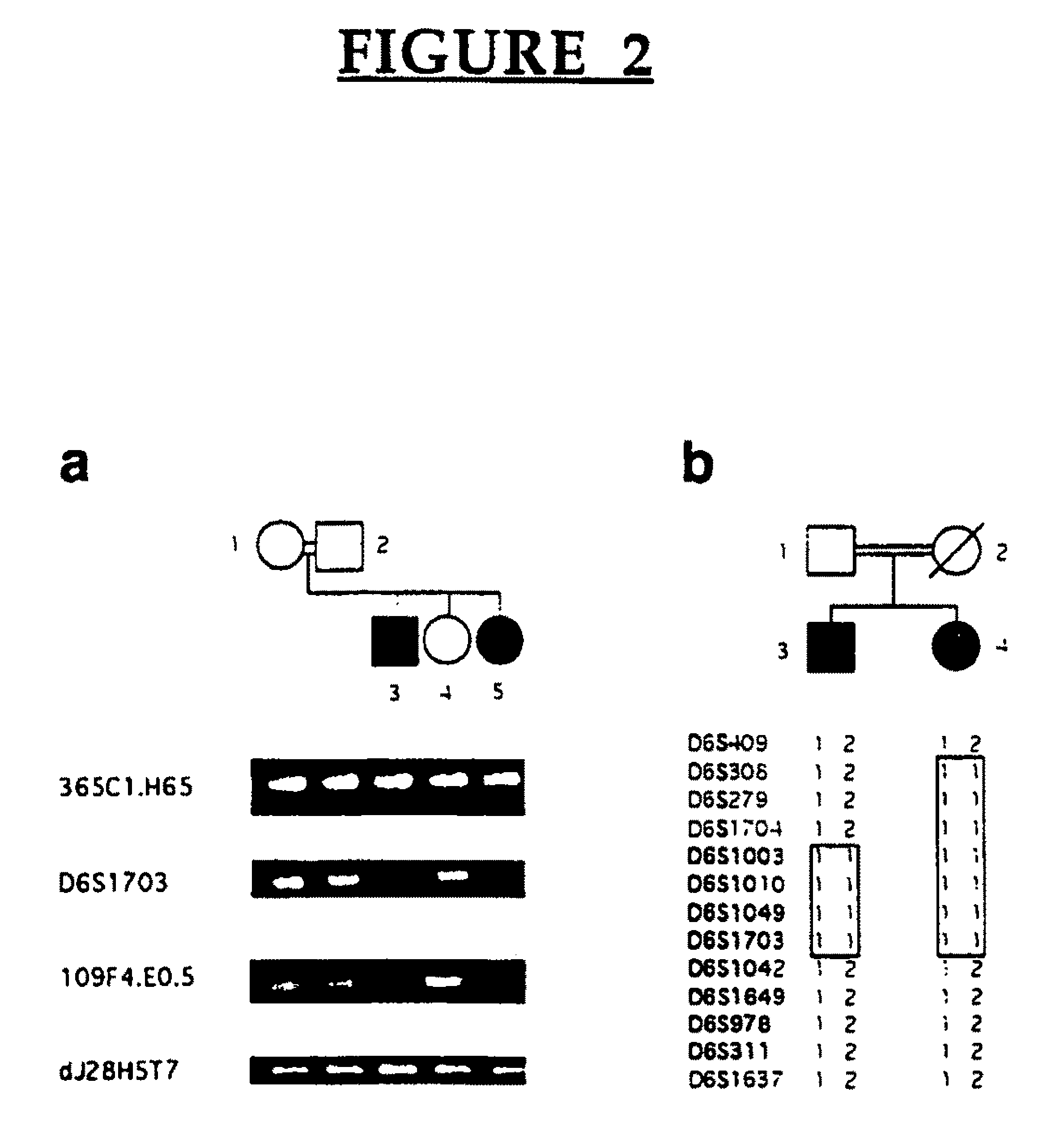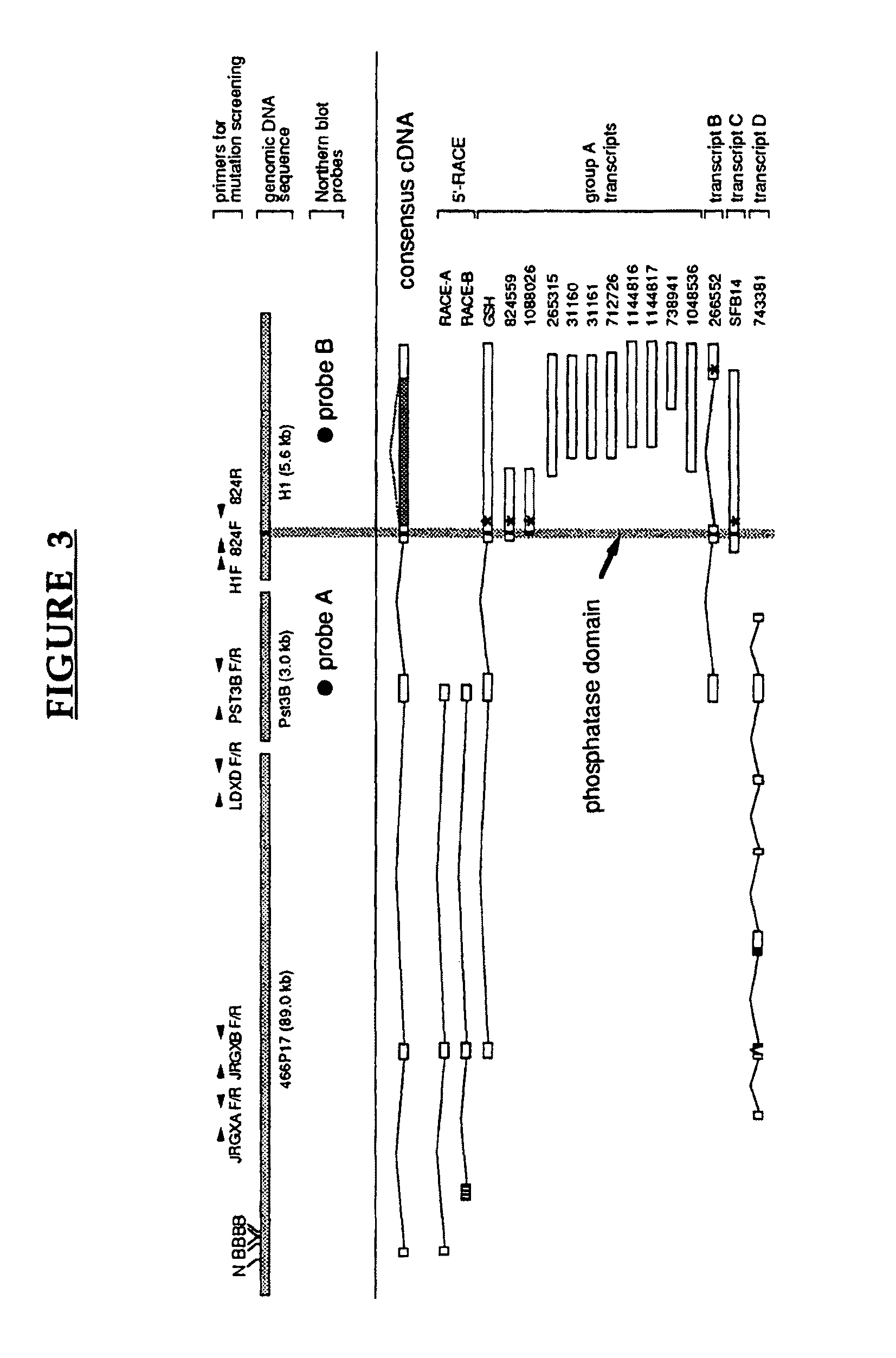Lafora's disease gene
- Summary
- Abstract
- Description
- Claims
- Application Information
AI Technical Summary
Benefits of technology
Problems solved by technology
Method used
Image
Examples
example 1
Characterization of EPM2A
Materials and Methods
[0134]Patients.
[0135]The diagnosis of Lafora's disease in patients with teenage onset progressive myoclonus epilepsy was confirmed by demonstration of Lafora bodies in skin, liver, muscle or brain biopsies (6-9) in at least one affected member from each of 38 families included in this study.
[0136]Physical Mapping.
[0137]Using mapping data available from the Whitehead Institute / MIT Genome Center (http: / / mit-genome.wi.mit.edu / ) as well as by identifying additional clones it was possible to establish an overlapping set of yeast artificial chromosome (YAC) clones between D6S1003 and D6S311. A total of 136 markers (12 genes, 41 ESTs, and 83 STSs / probes) were assayed against the YAC contig and 32 of these were found to be in the EPM2A critical region (FIG. 1). We also isolated 129 P1-derived artificial chromosomes (PACs) which cover an estimated 90% of the region between D6S1003 and D6S311 and have aligned the PACs by probe content, restriction...
example 2
EPM2A Mutations
[0158]Using the available genomic structure for the gene, the inventors' screened an affected member from each of 30 Lafora families for mutations by direct DNA sequencing. A total of 14 mutations were detected consisting of 12 different DNA sequence alterations and 2 microdeletions. The mutations are summarized in Table 3. The mutation from C to A at position -12 refers to a mutation that occurs 12 bases upstream from the ATG start codon in FIG. 13. Some of the sequence upstream of the ATG is as follows:[0159](SEQ ID NO: 19) . . . gccgggtattcgcgccgCcgccgcccgccATG . . .
The mutation site at -12 is indicated with a capital C. To date, mutations have been found in 65% of EPM2A families. Some of the mutations are discussed below
[0160]Two mutations that, based on the current consensus sequences were specific for transcript A, could be detected. Family LD-5 contained a homozygous C to T point mutation which resulted in an arginine to cysteine change affecting a region of un...
example 3
Summary of Common EPM2A Mutations
Patients and Methods
[0168]Patients reported here had biopsy-proven Lafora's disease. Polymerase chain reaction (PCR) primer sequences and conditions were:
[0169]
JRGXBF:5′-TCCATTGTGCTAATGCTATCTC-3′,(SEQ ID NO: 9)JRGXBR:5′-TCAGCTTGCTTTGAGGATATTT-3′,(SEQ ID NO: 10)H1F:5′-GAATGCTCTTTCCACTTTGC-3,(SEQ ID NO: 7)PTPR:5′-GGCTCCTTAGGGAAATCAG-3′;(SEQ ID NO: 8)
Annealing: 62°; [MgC12]=1.25 mM. Stock DNA was used; PCR products were purified on Qiagen columns. Restriction digests were performed at 37°, and products were run on 3% agarose gels.
Results
Mutations
[0170]EPM2A is composed of 4 exons located within a −130,000 bp span of chromosome 6q24. FIG. 11 shows a refined map of the deletion breakpoints in families LD-L4, LD9 and LD1. Filled symbols indicate patients with LD. Open rectangles on the map are the exons of EPM2A. Genomic structure around exons 1 and 2 is shown to scale. PCR markers 365C1.H65, 266B13, D6S1703A, JRGBF / R, LDXDF / R, 109F4.E.05 and dj28H5T7 were...
PUM
 Login to View More
Login to View More Abstract
Description
Claims
Application Information
 Login to View More
Login to View More - R&D
- Intellectual Property
- Life Sciences
- Materials
- Tech Scout
- Unparalleled Data Quality
- Higher Quality Content
- 60% Fewer Hallucinations
Browse by: Latest US Patents, China's latest patents, Technical Efficacy Thesaurus, Application Domain, Technology Topic, Popular Technical Reports.
© 2025 PatSnap. All rights reserved.Legal|Privacy policy|Modern Slavery Act Transparency Statement|Sitemap|About US| Contact US: help@patsnap.com



